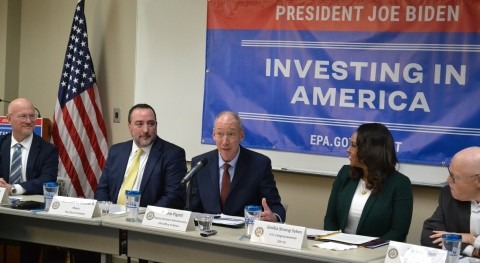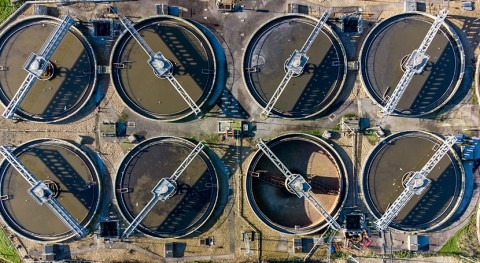The U.S. Environmental Protection Agency (EPA) took another key step in implementing the agency’s PFAS Action Plan by announcing a new validated method for testing per- and polyfluoroalkyl substances (PFAS) in drinking water. This new validated test method complements other actions the agency is taking under the Action Plan to help communities address PFAS nationwide.
“EPA’s important scientific advancement makes it possible for both government and private laboratories to effectively measure more PFAS chemicals in drinking water than ever before,” said EPA Administrator Andrew Wheeler. “We can now measure 29 chemicals, marking a critical step in implementing the agency’s PFAS Action Plan—the most comprehensive cross-agency plan ever to address an emerging chemical of concern.”
EPA’s new validated Method 533 focuses on “short chain” PFAS, those PFAS with carbon chain lengths of four to 12. Method 533 complements EPA Method 537.1 and can be used to test for 11 additional PFAS.
Method 533 accomplishes a key milestone in the EPA PFAS Action Plan by meeting the agency’s commitment to develop new validated methods to accurately test for additional PFAS in drinking water. Method 533 also incorporates an analytical technique called isotope dilution, which can minimize sample matrix interference and improve data quality.
Background on the PFAS Action Plan
PFAS are a large group of man-made chemicals used in consumer products and industrial processes. In use since the 1940s, PFAS are resistant to heat, oils, stains, grease, and water—properties which contribute to their persistence in the environment.
The agency’s PFAS Action Plan is the first multi-media, multi-program, national research, management, and risk communication plan to address a challenge like PFAS. The plan responds to the extensive public input the agency received during the PFAS National Leadership Summit, multiple community engagements, and through the public docket. The PFAS Action Plan outlines the tools EPA is developing to assist states, tribes, and communities in addressing PFAS.
EPA is taking the following highlighted actions:
Highlighted Action: Drinking Water
- EPA is committed to following the national primary drinking water regulation rulemaking process as established by the Safe Drinking Water Act (SDWA).
- EPA has sent the proposed regulatory determination for PFOA and PFOS to the Office of Management and Budget for interagency review.
- The agency is also gathering and evaluating information to determine if regulation is appropriate for other chemicals in the PFAS family.
Highlighted Action: Cleanup
- On June 10, 2019, EPA concluded public comment on the draft Interim Recommendations for Addressing Groundwater Contaminated with PFOA and PFOS, when finalized it will provide cleanup guidance for federal cleanup programs (e.g., CERCLA and RCRA) that will be helpful to states and tribes.
- EPA will follow through on the regulatory development process for listing perfluorooctanoic acid (PFOA) and perfluorooctanesulfonic acid (PFOS) as hazardous substances under the Comprehensive Environmental Response, Compensation and Liability Act (CERCLA).
Highlighted Action: Monitoring
- EPA will propose nationwide drinking water monitoring for PFAS under the next UCMR monitoring cycle.
Highlighted Action: Toxics
- EPA has issued an advanced notice of proposed rulemaking that would allow the public to provide input on adding PFAS to the Toxics Release Inventory toxic chemical list.
- A supplemental proposal to ensure that certain persistent long-chain PFAS chemicals cannot be manufactured in or imported into the United States without notification and review under TSCA is currently undergoing interagency review at the Office of Management and Budget.
Highlighted Action: Surface Water Protection
- EPA is exploring data availability and research to support the development of Clean Water Act human health and aquatic life criteria for certain PFAS
- EPA is examining available information about PFAS released into surface waters by industrial sources to determine if additional study is needed for potential regulation.
Highlighted Action: Biosolids
- EPA is in the early scoping stages of risk assessments for PFOA and PFOS in biosolids to better understand any potential health impacts.
Highlighted Action: Research
- On November 22, 2019, EPA announced availability of $4.8 million in funding for new research on managing PFAS in agriculture.
- EPA continues to compile and assess human and ecological toxicity information on PFAS to support risk management decisions.
- EPA continues to develop new methods to test for additional PFAS in drinking water.
- The agency is also validating analytical methods for surface water, ground water, wastewater, soils, sediments and biosolids; developing new methods to test for PFAS in air and emissions; and improving laboratory methods to discover unknown PFAS.
- EPA is developing exposure models to understand how PFAS moves through the environment to impact people and ecosystems.
- EPA continues to assess and review treatment methods for removing PFAS in drinking water.
- EPA is working to develop tools to assist officials with the cleanup of contaminated sites.
Highlighted Action: Enforcement
- EPA uses enforcement tools, when appropriate, to address PFAS exposure in the environment and assists states in enforcement activities.
- EPA has already taken actions to address PFAS, including issuing Safe Drinking Water Act orders and providing support to states. See examples in the PFAS Action Plan.
Highlighted Action: Risk Communications
- EPA will work collaboratively to develop a risk communication toolbox that includes multi-media materials and messaging for federal, state, tribal, and local partners to use with the public.



















